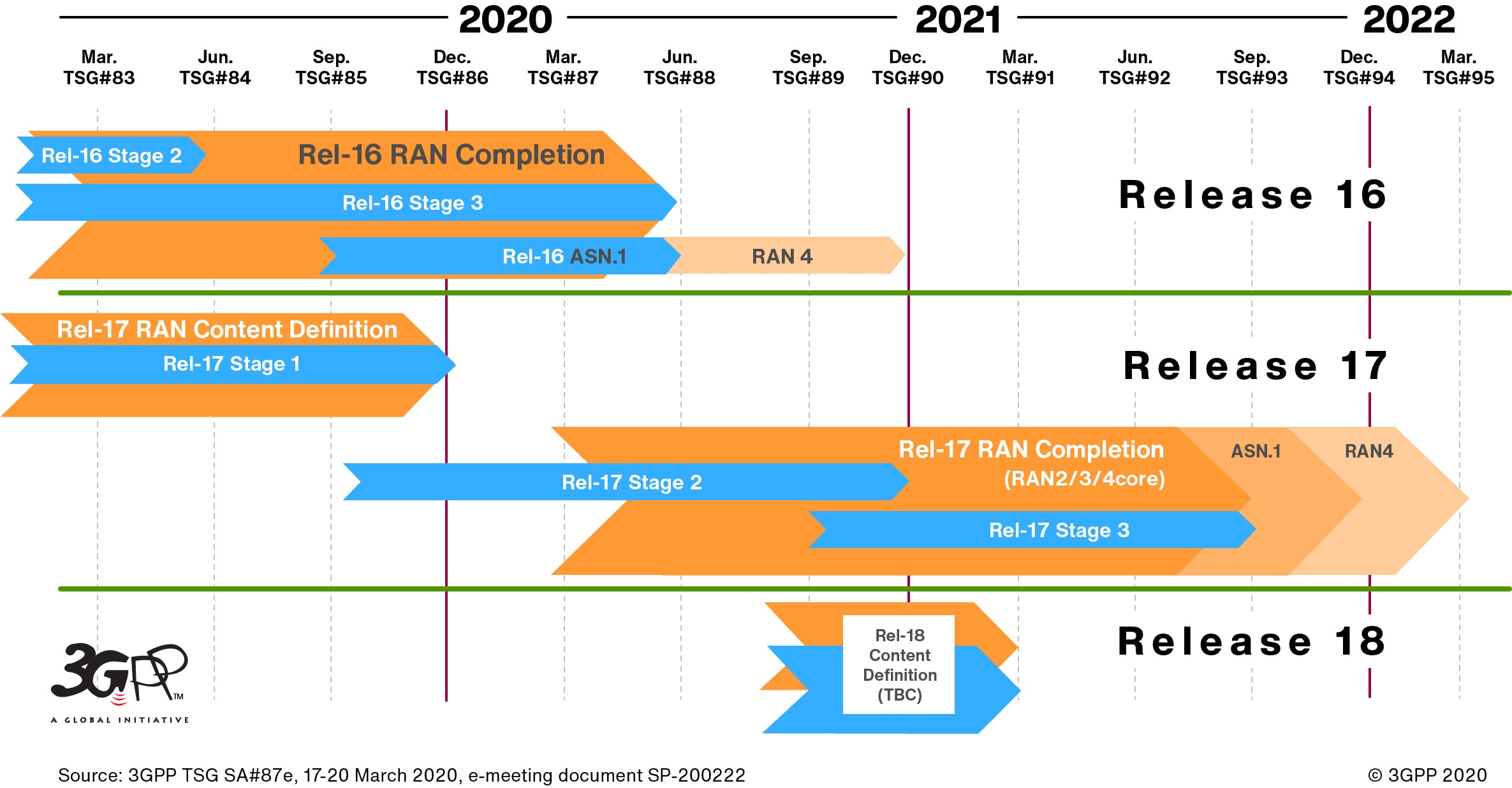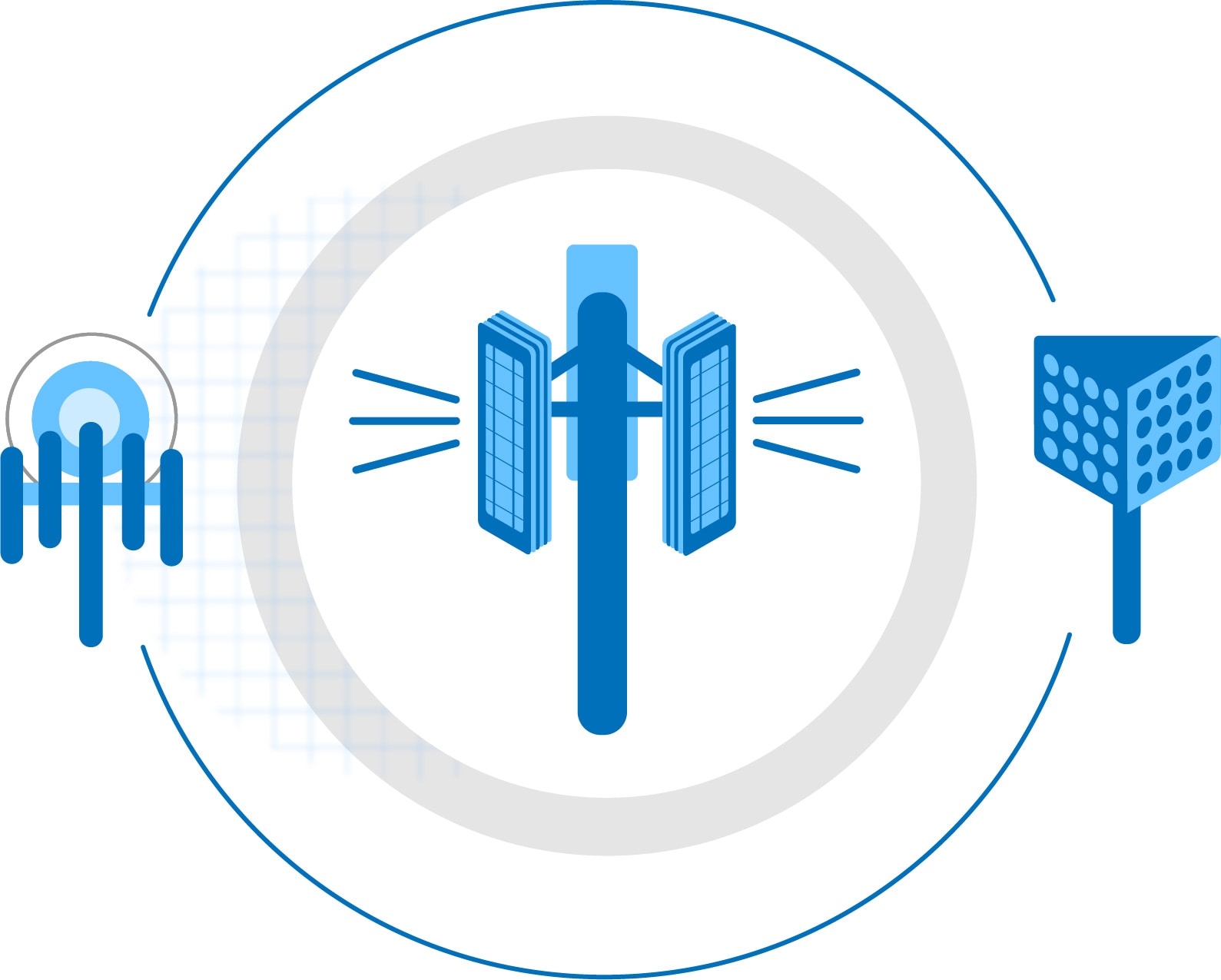As you read this, 5G is rolling out across the United States.
Some people have a 5G compatible phone that can connect to an AT&T network, T-Mobile, or Verizon. T-Mobile was the first carrier to deploy a nationwide 5G network, but only in the sub-6GHz spectrum, and slower than an optimum mmWave speed will ultimately be. AT&T has the largest network, which is mostly composed of a sub-6GHz spectrum operation. Many of these networks have only sub-6GHz spectrum capability now with speeds the same as 4G. Verizon has the most widespread mmWave network, but it does not yet work at optimum performance levels.
Take heart, cellphone users. Slow rollouts happened in 4G, 3G, and prior rollouts. Patience is needed. We will get there, and when we do, the world as we know it will change drastically for the better.
Let’s see where we are today in 5G technology with the latest 3GPP 5G release 16 completed on July 3, 2020.
In This Content
What Exactly is a 3GPP 5G Release?
3GPP uses a system of parallel Releases that provide developers with a stable platform for the implementation of features at a given point and then allow for the addition of new functionality in subsequent releases.
Essentially, new technologies for 5G are maturing. When a technology, such as Vehicle-to-everything (V2X) or Multiple User-Multiple Input Multiple Output (Mu-MIMO), reaches another growth point in its mature development, 3GPP advises developers in a Release to proceed with that present stable implementation and can incorporate it into their system.
The Excitement of 5G Release 16
Release 16, centered on industry expansion, is called 5G phase 2. Let’s see what this all means, as far as where we are, in the pursuit of a fully operational 5G system (Figure 1).
3GPP 5G Release 16 will enable enterprises and industrial organizations, from manufacturers to healthcare, to access the functionalities that will allow them to move forward with new levels of automation, efficiency, and service.
 Figure 1: 5G Release 16, 17, and 18 timelines (Image Source: 3GPP)
Figure 1: 5G Release 16, 17, and 18 timelines (Image Source: 3GPP)Six Important Aspects of 5G Release 16
5G New Radio (NR) Enhancements
MU-MIMO
With MU-MIMO, a base station can send multiple data streams, one for each User Equipment (UE), via the same time-frequency resources. MU-MIMO enables an increase in the total cell throughput/cell capacity. The base station will have multiple antenna ports, as many as there are UEs, which will be receiving data simultaneously. One antenna port is needed in each UE.
Essentially, more antennas will be deployed to achieve large gain from receive diversity and MIMO.

Figure 2: MU-MIMO sending multiple data streams, one for each UE, via the same time-frequency resources (Source: Qualcomm)
Multiple transmission and reception points (Multi-TRP)
These are macro-cells, small cells, pico-cells, femto-cells, remote radio heads (RRH), relay nodes, and more. Multi-TRP will improve reliability, coverage, and capacity performance via a mix of the above-mentioned flexible TRPs. This will enable exponential growth in 5G mobile data traffic, for example, when a wireless device at the cell edge can be served by multi-TRPs that will improve its signal transmission/reception, leading to increased throughput.
[“source=electronicdesign”]


